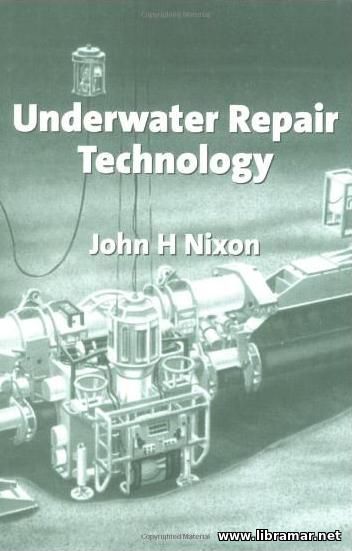UNDERWATER REPAIR TECHNOLOGY

| Author(s) | John H. Nixon |
| Publisher | Gulf Professional Publishing |
| Date | 2000 |
| Pages | 115 |
| Format | |
| Size | 5 Mb |
| D O W N L O A D | |
Briefly, the book is intended to provide a comprehensive overview of all techniques that are available in the industry for joining/repair offshore structures. Joining systems not involving the use of welding are discussed first. These engineering systems required for joining procedures are then discussed - pipe handling, design of the hyperbaric chambers etc.
The principal techniques of the underwater welding are then described - wet, one atmosphere plus hyperbaric welding, followed by a clear description of the major effects of environmental pressure on the hyperbaric welding processes. To make this section of the book more comprehensible to the general reader, a brief description of each welding process as it is used in general engineering is included before the modifications required for hyperbaric applications are discussed. Finally, those joining systems not used currently, but which show promise in the lab, are described, followed by some speculation relating to how underwater joining technology might develop over the next few years.
For general information, appendices providing description of the relevant diving technology, basic oceanography and also the methods of research commonly applied for the development of hyperbaric welding techniques are included. Although this book describes the technology of underwater repair at all water depths, it should be recognized that the great majority of offshore repair work is carried out at relatively shallow depths, in the region intermittently covered by the water, known as the "splash zone". This is because the speed of any object dropped from the platform or an adjacent ship is highest at the water line, while wave loadings, corrosion activity and the growth rate of marine life arc all at a maximum just below the surface.
In addition, the possibility of collision between shipping and the platform is also maximized at shallow depths. Thus, numerically, the majority of underwater repairs takes place at shallow depths, although the most economically and technologically significant arc in deeper water, frequently on pipelines.
The "Read Later" function allows you to add material to this block with just one click. Just click on the icon and read the articles that interest you at any convenient time.


